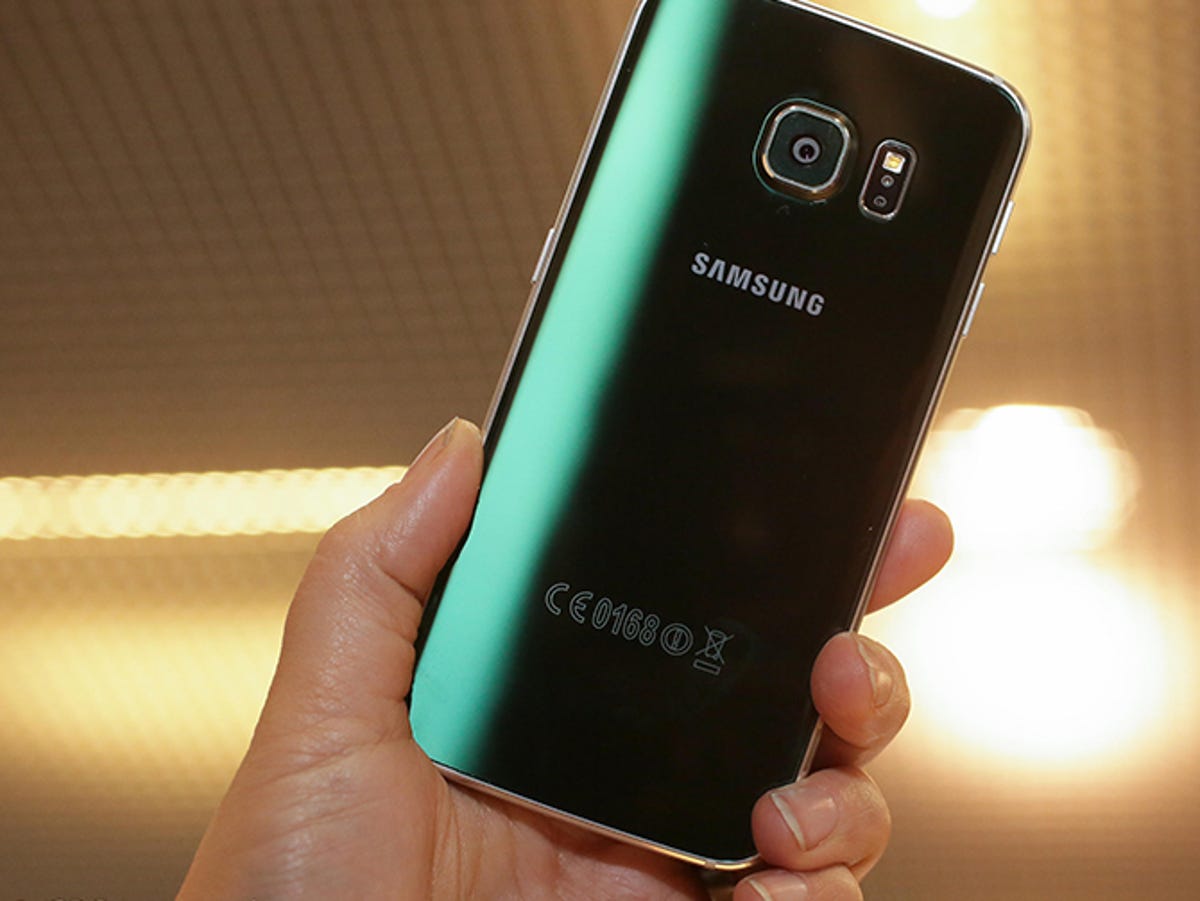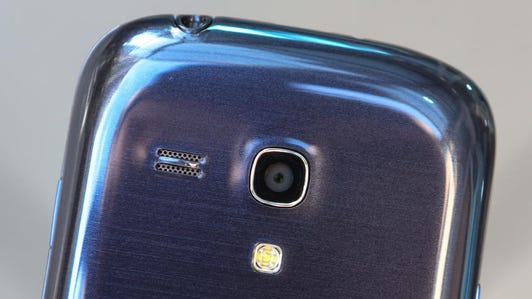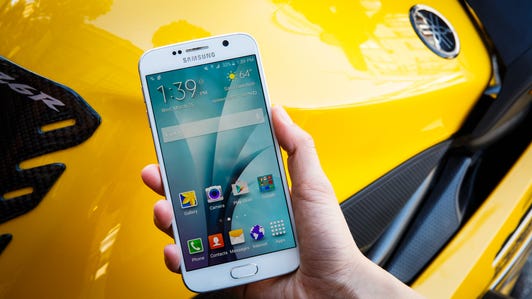
CNET
Samsung’s financial results continued to take a hit in the first quarter as the company battled tough competition in the smartphone market.
The South Korean electronics giant — which makes everything from smartphones and TVs to memory chips and displays — on Tuesday reported March quarter sales and operating profits largely in line with its estimate from earlier this month. Sales dropped 12 percent from the previous year while Samsung’s operating profit fell 30 percent.
A 30 percent decline in operating profit isn’t minor, but it’s a smaller drop than what Samsung has posted in previous quarters — 36 percent in the fourth quarter and 60 percent in the third quarter. Samsung also said smartphone shipments increased from the fourth quarter, led by mid- to low-end device, though tablet and feature phone sales fell.
“Earnings improved due to more efficient management of marketing expenditures, expanded sales of middle-end smartphones including the Galaxy A Series, and a strengthened premium lineup following the introduction of the Galaxy S6 and S6 edge,” Samsung said in a press release.
Galaxy S6 and S6 Edge meet their predecessors






+14 more
Still, Samsung’s IT and mobile business recorded a 57 percent year-over-year drop in operating profits, compared with a 64 percent decline in the fourth quarter and a 74 percent tumble in the third.
Samsung has been struggling over the past couple years as consumers opt for devices from its rivals, such as Apple. The company is counting on its new Galaxy S6 and Galaxy S6 Edge smartphones, released earlier this month, to revitalize its mobile business. Both devices include more premium materials than their predecessors, something consumers have been requesting for years. Still, it’s uncertain whether the phones will match the success of 2012’s blockbuster Galaxy S3, the device that helped Samsung rise to its position as the world’s smartphone king.
The company on Tuesday didn’t disclose how many Galaxy phones it sold in the first quarter but said earnings for its mobile division “are expected to grow, due to increased global sales of the Galaxy S6 and S6 Edge.” Still, the company cautioned that its total smartphone shipments in the second quarter will stay even with the first quarter because of a “possible decrease in sales of middle- to low-end models.” It also said marketing expenses will increase as it pushes the Galaxy S6 and S6 Edge, and overall smartphone and tablet in the market should “stagnate.”
See also
- Samsung beats estimates but expects profit decline in Q1
- Samsung teases upcoming round Gear smartwatch
- Samsung loses smartphone crown to Apple
- Samsung, in a race to build your next smartphone chip, may just win
Samsung’s financial results, while improving, are worlds apart from rival Apple. The iPhone and iPad maker on Monday posted record revenue and iPhone and Mac sales for its fiscal second quarter. The company has been benefiting from soaring demand for its newest iPhones, particularly in emerging markets such as China, and it sold 61.2 million smartphones during the period that ended March 28. Overall, Apple’s profit jumped 33 percent to $13.6 billion, and its revenue climbed 27 percent to $58 billion.
Samsung, by comparison, has seen its sales wane, and the March period represented the sixth time in a row that the company’s quarterly operating profit has fallen from the previous year. Samsung has been struggling to compete against Apple in the high-end phone market and against newcomers such as Xiaomi at the low end. Apple in particular has become a bigger threat with its larger-screen devices, the 4.7-inch iPhone 6 and the 5.5-inch iPhone 6 Plus. Simply wanting a bigger display is no longer a reason to buy Samsung’s devices, and its smartphones can’t reach the low prices of those from Chinese and Indian vendors.
The iPhone 6’s popularity helped Apple pass Samsung to become the world’s biggest smartphone maker in the fourth quarter, according to tech research firm Gartner. The firm believes Apple took home a 20.4 percent share of worldwide smartphone sales, up from 17.8 percent during the same quarter in 2013. Over the same period, Samsung’s share of the smartphone market, on sales of 73 million units, plummeted to 19.9 percent from 29.5 percent, Gartner said.
A Galaxy S6 lift?
Samsung’s Galaxy S6 devices are expected to give the company a boost, especially in the second quarter. The two devices feature more premium, metal casings instead of Samsung’s normal plastic, and the Edge also includes a screen that curves around the sides of the device. Samsung opted to use its own processors in the devices instead of purchasing chips from suppliers, which also should benefit its financial results in coming months.
Preorders for the smartphones started March 20, and they hit the market earlier this month. Samsung has predicted record sales for Galaxy S6 devices and says it’s selling the phones faster than it came make them. Analysts believe as many as 3 million units were shipped before the first quarter ended in March, according to The Wall Street Journal. Overall, analysts believe Samsung shipped 82 million smartphones during the period, the paper said, down from 89 million a year earlier. Samsung doesn’t disclose smartphone sales figures.


Now playing:
Watch this:
As Apple Watch lands, Samsung teases round smartwatch
2:55
The company’s IT and mobile communications division accounted for two-thirds of Samsung’s revenue during the peak of the smartphone business but has recently been closer to a third of all sales. The business posted a 57 percent drop in operating profits to 2.74 trillion won ($2.57 billion). Sales in the division fell 20 percent to 25.89 trillion won ($24.3 billion), with mobile in particularly dropping 20 percent to 24.99 trillion won ($23.5 billion).
As Samsung’s mobile business struggles, investors have increasingly turned their attention to the company’s processor business. Samsung is the world’s biggest maker of memory chips and also manufactures application processors that serve as the brains of devices, including many of Apple’s iPhones. The Galaxy S6 and 6 Edge use Samsung’s Exynos applications processor instead of a Qualcomm chip, as well as flash memory and the wireless chip that connects the phone to 3G and 4G networks.
Operating profit for the components business rose 9.9 percent, to 17.1 trillion won ($16.1 billion), slightly offsetting Samsung’s slumping smartphone results.
For the company overall, sales fell 12 percent from the previous year to 47.12 trillion won ($44.2 billion). Its operating profit slid 30 percent to 5.98 trillion won ($5.61 billion), and the company also reported net income of 4.63 trillion won ($4.34 billion), a 39 percent decline from the year-ago period.
Samsung earlier this month said its operating profit for the quarter likely dropped 30 percent from the previous year to 5.9 trillion won ($5.4 billion). Samsung also estimated its sales from the quarter likely fell about 12 percent year-over-year to 47 trillion won ($43.2 billion). At the time, the forecast was better than Wall Street expected.
Most recently, analysts polled by Thomson Reuters projected operating profit of 5.51 trillion won ($5.12 billion) on sales of 48.8 trillion won ($45.9 billion).
Before its recent string of declines, Samsung had posted five consecutive quarters of record profits.
Fully metal Samsung Galaxy S6 looks sharp (pictures)






+25 more



